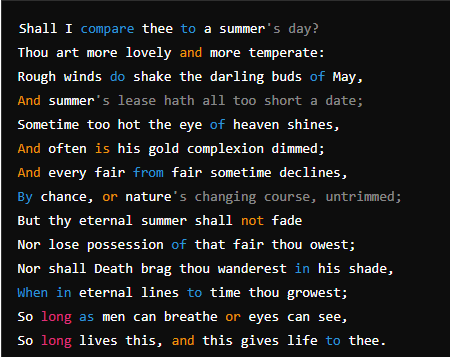
Sonnets are a timeless form of poetry that has captivated readers for centuries. These 14-line poems, often written in iambic pentameter, explore themes of love, beauty, politics, and nature with a unique lyrical quality. In this article, we will delve into the world of sonnets, providing beautiful examples and answering frequently asked questions. Whether you are a poetry enthusiast or a curious reader, this guide will help you appreciate the intricate beauty of sonnet poems.
What is a Sonnet?
A sonnet is a poetic form that originated in Italy and became popular in England during the Renaissance. It is traditionally composed of 14 lines with a specific rhyme scheme and meter. The two most well-known sonnet forms are the Italian (Petrarchan) and the English (Shakespearean) sonnets.
Types of Sonnets
Italian (Petrarchan) Sonnet: This form consists of an octave (eight lines) with a rhyme scheme of ABBAABBA, followed by a sestet (six lines) with varying rhyme schemes such as CDECDE or CDCDCD.
English (Shakespearean) Sonnet: This form comprises three quatrains (four lines each) with a rhyme scheme of ABABCDCDEFEFGG, ending with a rhymed couplet (two lines).
Beautiful Sonnet Poem Examples
Shakespeare's Sonnet 18: "Shall I compare thee to a summer's day?"
One of the most famous sonnets, Shakespeare's Sonnet 18, explores the theme of eternal beauty.

John Donne's Holy Sonnet 10: "Death, be not proud"
John Donne's Holy Sonnet 10 addresses the personification of death, challenging its power and fearsome reputation.

Why are sonnets so popular?
Sonnets remain popular due to their concise yet expressive form. The strict structure challenges poets to convey deep emotions and complex ideas within a limited space, making each word and line impactful.
What are common themes in sonnets?
Common themes in sonnets include love, beauty, time, mortality, and nature. Poets often explore these themes through personal reflection, philosophical musings, and vivid imagery.
How can I write a sonnet?
Writing a sonnet involves adhering to the form's specific structure and rhyme scheme. Begin with a clear theme or subject, and draft your poem in iambic pentameter. Focus on creating a volta, or turn, where the poem shifts in tone or perspective, typically between the eighth and ninth lines in an Italian sonnet or the final couplet in a Shakespearean sonnet.
The Impact of Sonnets
Sonnets have influenced literature and culture for centuries. They have been used to express romantic love, political commentary, and personal introspection. The enduring popularity of sonnets speaks to their universal appeal and the ability to resonate with readers across generations.
Conclusion
Sonnets are a testament to the enduring power of poetry. Their structured form and lyrical beauty continue to inspire poets and readers alike. By exploring beautiful sonnet examples and understanding their themes and structure, we can appreciate the rich history and emotional depth of these timeless poems.
You've got a free upvote from witness fuli.
Peace & Love!
Downvoting a post can decrease pending rewards and make it less visible. Common reasons:
Submit